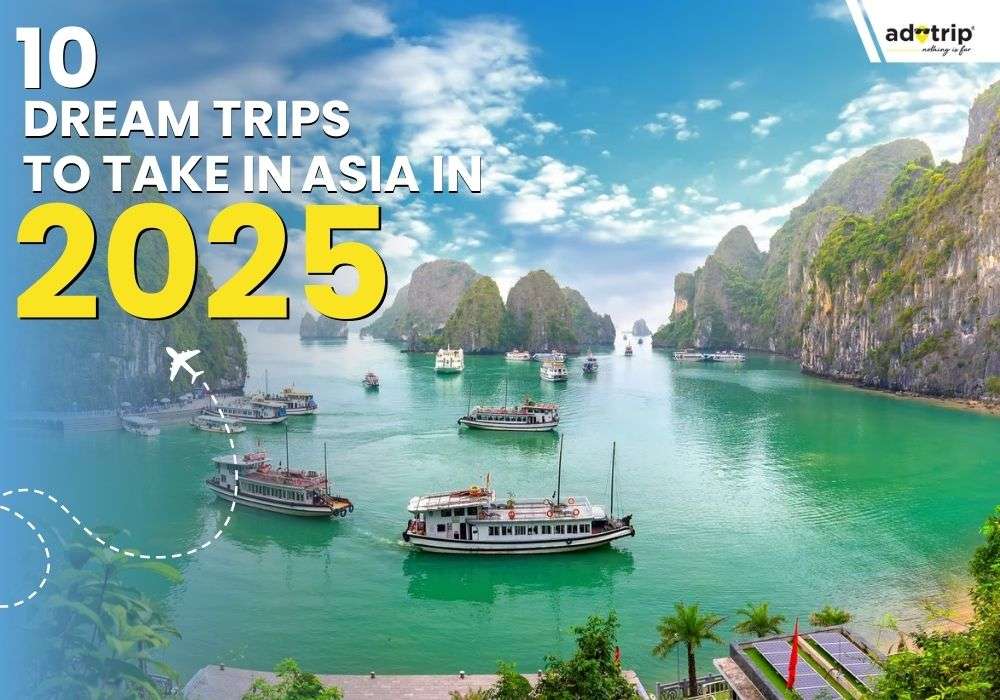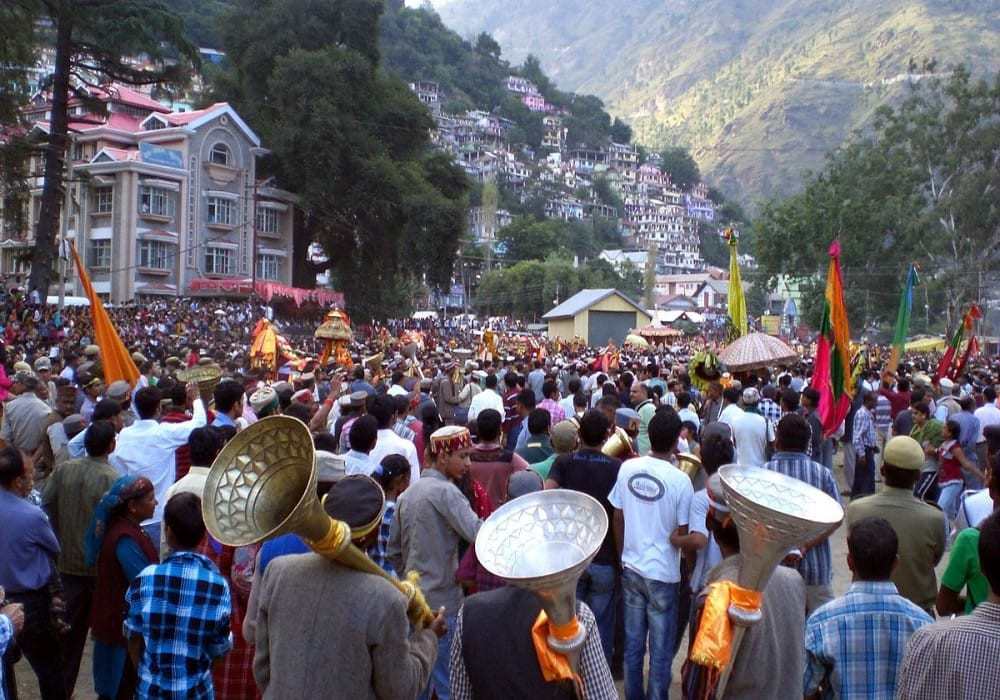
Last Updated At: 01-Jan-2025
Kashmir vs Ladakh: A Complete Travel Guide 2025
Kashmir and Ladakh, situated in the breathtaking Himalayas, offer unique experiences for travellers. Kashmir is renowned for its serene lakes, lush valleys, and Mughal gardens, providing a picturesque retreat. It showcases traditional handicrafts and vibrant markets. On the other hand, Ladakh boasts rugged landscapes, high-altitude desert, and ancient monasteries, attracting adventurers seeking thrilling treks and cultural immersion. And it offers authentic Tibetan artefacts and souvenirs.
Kashmir is enticed by romantic houseboats on Dal Lake, while Ladakh beckons with exhilarating activities like river rafting and mountain biking. The climate differs, too, with Kashmir enjoying milder temperatures and Ladakh experiencing extreme cold, particularly in winter. Kashmir's rich culinary scene offers delectable Wazwan cuisine, while Ladakh tantalises taste buds with hearty Tibetan fare.
Whether seeking serenity amidst Kashmir's serene landscapes or adventure amid Ladakh's rugged terrain, both regions promise unforgettable experiences. Deciding between Kashmir and Ladakh boils down to your preferences – serene beauty and cultural richness in Kashmir or rugged adventures and spiritual enlightenment in Ladakh. So, Get ready to explore the wonders of Kashmir and Ladakh with us.
Weather: Kashmir vs Ladakh
Kashmir and Ladakh, both in the northern region of India, boast distinct weather patterns due to their varying landscapes. The best time to visit Kashmir and Ladakh is between March and July, but the weather conditions differ. Kashmir's weather is relatively milder and experiences four distinct seasons: spring, summer, autumn, and winter. Summers are pleasant, with temperatures ranging from 15°C to 30°C, making it an ideal time for outdoor activities and tourism. Autumn showcases vibrant hues as the leaves change colour, creating picturesque landscapes. Winters are cold, with temperatures dropping below freezing point and heavy snowfall transforming the region into a winter wonderland.
In contrast, Ladakh's weather is characterised by its high altitude and arid climate. Summers are short and mild, with temperatures ranging from 20°C to 30°C during the day and dropping significantly at night. Winters are long and harsh, with temperatures plummeting to sub-zero levels and heavy snowfall blocking mountain passes. The region remains isolated during this time, with limited accessibility. Due to its desert-like conditions, Ladakh experiences low precipitation and humidity throughout the year, starkly contrasting it to Kashmir's lush greenery.
Book Ladakh Tour Packages
Landscape Diversity: Kashmir vs Ladakh
Kashmir and Ladakh offer contrasting landscapes, reflecting their geographical diversity. Kashmir, known as "Paradise on Earth," boasts lush green valleys, meandering rivers, and dense forests. The region is adorned with vibrant gardens, such as Shalimar Bagh and Nishat Bagh, adding to its natural beauty. In contrast, Ladakh presents a rugged terrain characterised by barren mountains, deep gorges, and high-altitude deserts. The mesmerising Pangong Lake and Nubra Valley are iconic attractions in Ladakh, showcasing its unique landscape. While Kashmir showcases verdant landscapes, Ladakh's stark beauty lies in its arid expanses and towering peaks.
Read More : Places To Visit In Kashmir
Major Tourist Attractions of Kashmir
Kashmir, renowned for its captivating beauty, boasts many enchanting tourist destinations that draw travellers from far and wide. From serene lakes to majestic mountains, lush gardens to ancient temples, Kashmir offers a wealth of attractions to explore and cherish. Let's delve into the must-visit tourist spots that showcase this picturesque region's rich natural and cultural heritage.
- Dal Lake: Enjoy a peaceful boat ride on this iconic lake surrounded by majestic mountains.
- Mughal Gardens: Explore the beautiful terraced gardens built by Mughal emperors, featuring lush greenery and colourful flowers.
- Gulmarg: Experience thrilling skiing adventures and ride on Asia's highest gondola.
- Sonmarg: Marvel at the breathtaking landscapes of meadows, glaciers, and snow-capped peaks.
- Pahalgam: Discover the "Valley of Shepherds" with its scenic beauty and adventure activities like trekking and river rafting.
- Shankaracharya Temple: Visit this ancient Hindu temple atop a hill for panoramic views of Srinagar.
- Shalimar Bagh: Admire this historic garden's exquisite Mughal architecture and serene water features.
- Hazratbal Shrine: Pay homage to this revered Muslim shrine on the banks of Dal Lake.
- Betaab Valley: Enjoy picnics amidst lush greenery and towering mountains, named after the Bollywood movie "Betaab."
- Awantipora Ruins: Explore ancient temple ruins dating back to the 9th century, showcasing Kashmiri architecture.
- Martand Sun Temple: Visit the ruins of this historic temple dedicated to the Sun god, offering glimpses of Kashmir's ancient past.
- Chashme Shahi: Relax in the serene ambience of this Mughal garden known for its natural spring water.
- Jama Masjid: Admire the architectural beauty of this centuries-old mosque, one of the largest in Kashmir.
- Yusmarg: Escape to this lesser-known hill station for scenic walks, horse riding, and stunning views of meadows and forests.
- Wular Lake: Explore one of the largest freshwater lakes in India, offering birdwatching, boating, and serene surroundings.
Read More : Tourist Places In Ladakh
Major Tourist Attractions of Ladakh
Ladakh, settled amidst the towering peaks of the Himalayas, is a land of rugged beauty and cultural richness. Its vast expanses of barren landscapes, azure lakes, and ancient monasteries make it a haven for travellers seeking adventure and tranquillity. Join us as we hop on a journey to explore the top tourist attractions that define the essence of Ladakh's unparalleled charm and allure.
- Thiksey Monastery: A beautiful Tibetan Buddhist monastery known for resembling the famous Potala Palace in Tibet.
- Hemis Monastery: One of Ladakh's largest and wealthiest monasteries, famous for its annual Hemis Festival.
- Pangong Lake: A breathtaking high-altitude lake with crystal-clear blue waters, famous for its appearance in Bollywood movies.
- Magnetic Hill: Known for its mysterious magnetic properties that defy gravity, cars appear to roll uphill.
- Nubra Valley: A mesmerising valley known for its unique landscapes, dunes, and double-humped Bactrian camels.
- Shanti Stupa: A Buddhist white-domed stupa offering panoramic views of Leh and the surrounding Himalayan mountains.
- Leh Palace: A historic palace that once served as the royal residence of the Namgyal dynasty rulers of Ladakh.
- Markha Valley: A popular trekking destination with stunning landscapes, high passes, and remote villages.
- Zanskar River: Famous for its challenging white-water rafting opportunities and stunning gorge scenery.
- Tso Moriri Lake: A serene high-altitude lake surrounded by majestic mountains, offering a peaceful retreat.
- Diskit Monastery: The oldest and largest monastery in the Nubra Valley, known for its giant statue of Maitreya Buddha.
- Leh Market: A bustling marketplace offering a variety of local handicrafts, souvenirs, and traditional Ladakhi attire.
- Lamayuru Moonland: Known for its unique lunar-like landscapes, eroded into strange formations over centuries.
Cultural Heritage: Kashmir vs Ladakh
Cultural differences between Kashmir and Ladakh are deeply rooted in their history and traditions. Kashmir's culture is influenced by Hindu, Muslim, and Buddhist customs, resulting in a rich tapestry of art, music, and festivals. The region is renowned for its exquisite handicrafts, such as Pashmina shawls and Kashmiri carpets, reflecting its artistic heritage. Conversely, Ladakh is predominantly Buddhist, with monasteries like Hemis and Diskit serving as spiritual centres. The vibrant Hemis Festival and traditional dance forms like Cham are integral to Ladakhi culture. Despite their distinct cultural identities, both regions share a reverence for nature and hospitality towards visitors.
Read More : Things To Do In Ladakh
Adventure Opportunities: Kashmir vs Ladakh
Both Kashmir and Ladakh offer unparalleled adventure opportunities, albeit in different settings. Kashmir is ideal for leisurely activities like trekking amidst verdant valleys, such as the famous trek to the Amarnath Cave. The Lidder River provides thrilling rafting experiences, while Gulmarg offers skiing adventures during winter. In Ladakh, the rugged terrain beckons adventure enthusiasts with challenging trekking trails, including the famous Markha Valley and Stok Kangri treks. Trekking trails in Ladakh, compared to Kashmir, are more adventurous and thrilling.
The region's high-altitude lakes, like Tso Moriri and Pangong, offer mesmerising landscapes for camping and photography. Ladakh's barren expenses also attract adrenaline junkies with opportunities for mountain biking, rock climbing, and jeep safaris across remote mountain passes. Whether seeking serene landscapes or adrenaline-pumping activities, Kashmir and Ladakh promise unforgettable adventures.
Read More : Food Of Ladakh
Climate Variations: Kashmir vs Ladakh
The climate comparison between Ladakh and Kashmir reveals stark variations due to their distinct geographical features. Kashmir experiences a temperate climate with four seasons, including mild summers and cold winters. The valley enjoys abundant rainfall, resulting in lush greenery and vibrant flora. In contrast, Ladakh's high altitude and arid desert climate lead to extreme weather conditions. Summers are short and mild, while winters are harsh, with temperatures plummeting below freezing. The region receives minimal precipitation, and snowfall is limited to higher altitudes. Ladakh's climate is characterised by low humidity and clear skies, making it ideal for stargazing. Despite their climate differences, both regions offer unique experiences for travellers throughout the year.
Read More : Famous Food Of Kashmir
Local Cuisine: Kashmir vs Ladakh
The traditional cuisine of Kashmir and Ladakh reflects their cultural heritage and geographical diversity. Kashmiri cuisine is renowned for its rich flavours and aromatic spices, with dishes like Rogan Josh, Yakhni, and Dum Aloo tantalising taste buds. Wazwan, a multi-course meal served on special occasions, is a hallmark of Kashmiri hospitality. The region also boasts delectable desserts like Phirni and Shufta, showcasing its culinary finesse. In Ladakh, the cuisine is influenced by Tibetan and Central Asian flavours, featuring hearty dishes like Thukpa, Momos, and Skyu. Butter tea, made from yak butter and salt, is popular in Ladakh. Despite their differences, both regions offer culinary delights that delight food enthusiasts and provide a glimpse into their cultural heritage.
Read More : Famous Festivals Of Kashmir
Shopping Experiences: Kashmir vs Ladakh
Shopping in Kashmir and Ladakh offers unique experiences, reflecting their cultural diversity and craftsmanship. Kashmir is renowned for its exquisite handicrafts, including Pashmina shawls, Kashmiri carpets, and papier-mâché items. The bustling markets of Srinagar, such as Lal Chowk and Residency Road, offer a wide range of traditional artefacts and souvenirs. Ladakh's markets showcase Tibetan and Ladakhi handicrafts, such as Thangka paintings, prayer flags, and hand-woven woollens. The Leh Market and Tibetan Refugee Market are popular shopping destinations in Ladakh, offering various authentic products. Both regions also boast vibrant bazaars where visitors can haggle with local vendors and immerse themselves in the region's cultural heritage through its crafts and textiles.
Both Kashmir and Ladakh offer incredible experiences for travellers to enjoy. Whether you prefer the lush valleys and cultural richness of Kashmir or Ladakh's rugged terrain and adventurous spirit, there's something for everyone. Why not plan a trip to both regions to truly appreciate the diversity and beauty that India's northernmost territories have to offer? The possibilities are endless, from exploring ancient temples to trekking through breathtaking landscapes. Start your journey today and discover the Kashmir vs Ladakh tourist attractions!
Read More : Things To Do In Kashmir
Plan your visit with Adotrip today. Obtain a wealth of information and end-to-end travel assistance and book flights, hotels and tour Packages under one roof.
With us, Nothing is far!
Book Kashmir Tour Packages
Frequently Asked Questions About Kashmir vs Ladakh
Q1. What is the difference between Kashmir and Ladakh?
A1. Kashmir boasts lush valleys, vibrant culture, and historic sites, while Ladakh offers rugged terrain, Buddhist monasteries, and high-altitude adventures, showcasing contrasting landscapes and cultural experiences within India's northern region.
Q2. Which region offers better tourist attractions, Kashmir or Ladakh?
A2. The answer depends on personal preferences. Kashmir offers lush valleys, lakes, and historic sites, while Ladakh boasts stunning landscapes, Buddhist monasteries, and high-altitude adventures.
Q3. Are Kashmir and Ladakh part of the same union territory in India?
A3. No, Kashmir and Ladakh are not part of the same union territory in India. As of October 31, 2019, the former state of Jammu and Kashmir was reorganised into two separate union territories.
Q4. What are the major cultural distinctions between Kashmir and Ladakh?
A4. Kashmir boasts Islamic-influenced music, Sufism, and vibrant shawls, while Ladakh reflects Tibetan heritage with Buddhist monasteries, vibrant prayer flags, and yak-based cuisine.
Q5. Is Ladakh more accessible for adventure tourism compared to Kashmir?
A5. Both Ladakh and Kashmir offer exciting adventure tourism opportunities, but accessibility can differ depending on several factors.
--- Published By Shradha Mehra
Latest Blogs

Best Traditional Shrines and Temples in Japan
.jpg)
Famous Places For Foodies in India 2025

Coron vs. El Nido: Which Is Truly Better?

Packing Tips for Your Next Disney Vacation






 Dubai
Dubai Malaysia
Malaysia USA
USA





